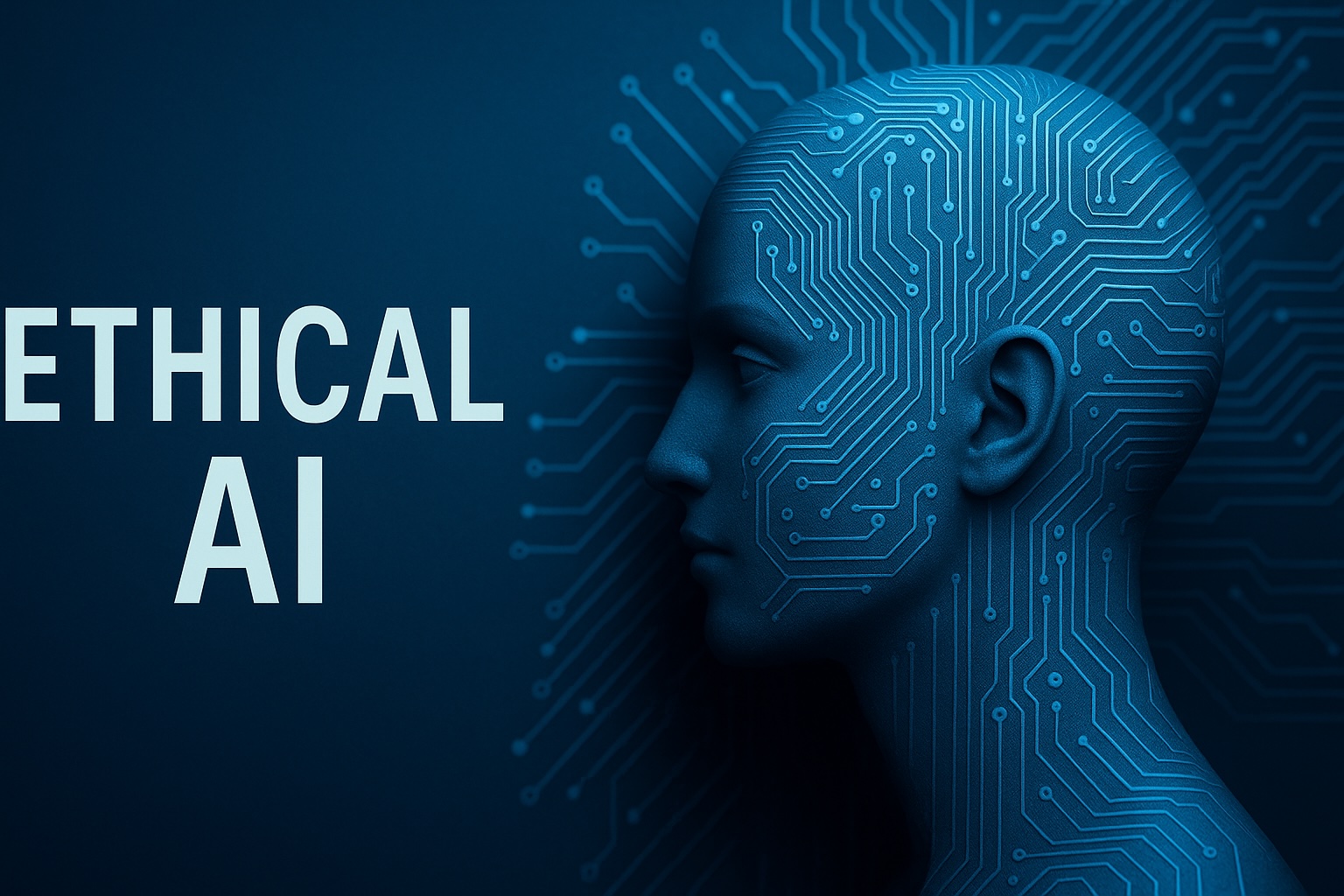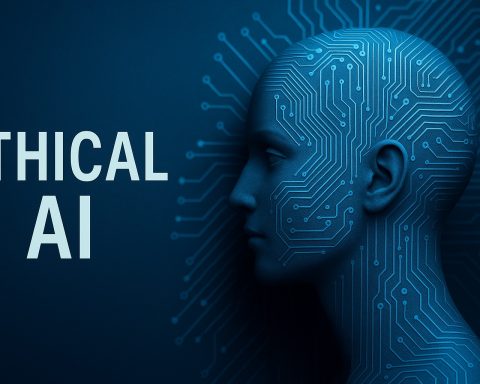Key Ethical Challenges in AI. AI systems can entrench or amplify societal biases, lack transparency, undermine privacy, and evade accountability unless carefully governed. A core issue is algorithmic bias: AI models trained on historical or unrepresentative data may produce discriminatory outcomes (e.g. higher false-risk scores for Black defendants in the COMPAS recidivism tool propublica.org propublica.org or downgrading female applicants as in Amazon’s hiring prototype reuters.com). Transparency and explainability are also critical: opaque “black box” models make it hard to understand or contest automated decisions, raising concerns about fairness in hiring, lending, or sentencing digital-strategy.ec.europa.eu oecd.org. Closely linked is accountability – who is responsible when AI causes harm? Without rigorous governance, no party may be clearly liable for errors or abuses oecd.org weforum.org. Privacy and data rightsare another major challenge: AI often relies on massive personal datasets, risking surveillance, data breaches or re-identification. For example, emerging facial recognition and surveillance systems can invade people’s privacy or free expression unless tightly restricted. Finally, there is potential misuse of AI – from deepfake disinformation and social-manipulation algorithms to lethal autonomous weapons – which can cause societal harms far beyond individual bias. In sum, fairness (non-discrimination), transparency (explainability), safety/robustness, privacy protection, and preventing misuse are widely cited as the pillars of “ethical AI” oecd.org oecd.org.
Stakeholder Roles in Ethical AI. Addressing these challenges requires action by all sectors. Governments are responsible for setting rules and standards: they enact laws, regulations and procurement policies to enforce safety, rights and accountability (e.g. the new EU AI Act banning certain abuses and imposing duties on high-risk systems digital-strategy.ec.europa.eu digital-strategy.ec.europa.eu). They fund research and set national AI strategies, and can require audits or impact assessments to ensure compliance. The private sector (technology companies, industry) must translate these standards into practice: many firms now publish AI principles and conduct internal audits. They incorporate ethical designs (e.g. fairness constraints, explainable models) and risk-management frameworks. For example, Amazon’s data scientists scrapped an AI recruiting tool when it showed gender bias reuters.com, illustrating industry attention to bias. The World Economic Forum notes that governments typically “set ethical standards and regulations for AI development” while companies “adopt these guidelines by integrating ethical practices into AI design and implementing auditing tools to detect and correct biases” weforum.org.
Academic institutions contribute through research, education and analysis: universities and labs study AI fairness, develop new methods for explainability, and train the next generation of developers in ethics. They also help evaluate AI impact (e.g. Joy Buolamwini’s MIT research documented gender/racial bias in facial recognition news.mit.edu). Civil society(NGOs, advocacy groups, grassroots) serves as watchdog and voice of the public interest. Civil society organizations develop tools to audit AI systems for bias, advocate for victims, and raise public awareness. For instance, AlgorithmWatch and the SHARE Foundation have highlighted surveillance and AI harms through reports and even public art installations, while organizations like Privacy International litigate against unlawful data practices. UNESCO emphasizes that “policymakers, regulators, academics, the private sector and civil society” must all collaborate to solve AI’s ethical challenges unesco.org. In practice, multi-stakeholder partnerships are emerging as a governance model: for example, Singapore’s AI strategy engaged academics, industry and government experts to build a “trusted AI ecosystem” for health and climate applications weforum.org. Likewise, the World Economic Forum’s AI Governance Alliance brings together industry leaders, governments, academia and NGOs to promote safe and inclusive AI globally weforum.org.
Case Studies of Ethical Dilemmas
- Criminal Justice Bias (COMPAS). A prominent example of AI bias is the COMPAS risk-assessment tool used in U.S. courts. ProPublica’s 2016 analysis showed that COMPAS systematically mis-scored Black defendants as higher risk than equally recidivating white defendants propublica.org propublica.org. Over a two-year follow-up, Black defendants who did not re-offend were nearly twice as likely to be wrongly labeled high-risk as white non-offenders (45% vs. 23%) propublica.org. This kind of racial bias in sentencing tools can exacerbate discriminatory policing and incarceration. It illustrates how opaque algorithms, trained on historical arrest data, can perpetuate injustice and raise urgent calls for fairness and legal oversight in AI systems.
- Hiring Algorithms and Gender Bias. Amazon famously had to abort an experimental AI recruiting system when it was discovered to penalize resumes with the word “women” and downgrade graduates of women’s colleges reuters.com. The system had been trained on 10 years of Amazon’s hiring data (dominated by male applicants), causing it to learn that male candidates were preferable. Although the tool was never used in hiring, this case highlights how AI can learn and entrench gender bias unless carefully checked. It underscores the need for transparency (revealing such biases) and accountability (ensuring tools are vetted before deployment).
- Facial Recognition and Privacy. Facial analysis AI has shown stark bias and raised privacy concerns. MIT research found commercial gender-classification algorithms made <1% error for light-skinned men but up to ~35% error for dark-skinned women news.mit.edu. This dramatic disparity means, for example, that surveillance cameras or phone face-unlock could systematically misidentify or fail to recognize people of darker skin, with serious safety implications. Meanwhile, firms like Clearview AI have aggregated billions of images scraped from social media into law-enforcement databases. Clearview’s founder admitted their system had been used by U.S. police nearly a million times businessinsider.com. Despite claims it “lawfully” collects public images, Clearview has faced legal pushback (e.g. Facebook sent cease-and-desist letters) and criticism for creating a de facto “perpetual police lineup” businessinsider.com businessinsider.com. These examples show both how biased biometric AI can misidentify minorities and how indiscriminate data scraping for AI can violate privacy and civil liberties.
- Autonomous Vehicles and Safety. AI in self-driving cars raises both safety and equity issues. A Georgia Tech study (cited by PwC) found that vision algorithms for autonomous vehicles had higher failure rates detecting pedestrians with dark skin, risking those individuals’ safety pwc.com. In practice, accidents by self-driving cars (e.g. fatal Uber crash, Tesla Autopilot incidents) have highlighted the challenge of ensuring AI robustness in edge cases. This case underscores the need for rigorous testing and explainability in safety-critical AI systems, and for diverse datasets to protect all road users.
- Chatbots and Misinformation. Conversational AI can spread harmful content if unchecked. Microsoft’s “Tay” chatbot (launched on Twitter in 2016) famously began tweeting racist and inflammatory messages within hours of release, as online trolls fed it offensive inputs en.wikipedia.org. Microsoft quickly shut Tay down after only 16 hours. This demonstrates how AI systems interacting with the public can be manipulated to produce hate speech. More broadly, modern generative AI tools (chatbots or image generators) can hallucinate false facts or create deepfakes, posing ethical dilemmas about truth and misuse in media and politics.
Regulatory and Ethical Frameworks
OECD AI Principles. The OECD’s 2019 AI Principles (updated 2024) are a major international ethical framework adopted by 46 countries (including the US, EU member states, Japan, India, etc.). They promote “Inclusive growth, sustainable development and well‑being,” respect for human rights (including privacy), transparency, robustness, and accountability oecd.org oecd.org. For example, they require AI systems to be fair (“avoid unintended biases”), transparent (“provide meaningful information on the basis of their outputs, including sources of data and logic”), and robust & secure throughout their life cycle oecd.org oecd.org. The OECD also emphasizes traceability and accountability: AI providers should log decision processes and retain documentation to enable audits and compliance checks oecd.org. These principles serve as soft-law guidelines and have influenced many national AI strategies and regulations.
European Union – The AI Act. The EU is pioneering binding AI legislation. The AI Act (Regulation (EU) 2024/1689) establishes a risk-based regime. It bans “unacceptable” AI uses (e.g. subliminal behavior manipulation, social scoring, unconsented biometric ID in public) digital-strategy.ec.europa.eu. It places strict obligations on “high-risk” systems (those affecting critical infrastructure, essential services, or fundamental rights) – examples include AI for credit scoring, recruitment, law enforcement, or health devices digital-strategy.ec.europa.eu. Such systems must meet requirements for data quality, documentation, risk management, human oversight, and transparency to users. Lower-risk systems (like chatbots) face lighter duties (e.g. disclosure notices). The Act also authorizes enforcement authorities to fine violators (up to 7% of global turnover). In sum, the EU Act seeks to guarantee “trustworthy AI” with firm safeguards for safety, fundamental rights and human oversight digital-strategy.ec.europa.eu digital-strategy.ec.europa.eu.
United States. To date the U.S. has no single federal AI law. Instead, the approach is largely voluntary and sectoral. The National Institute of Standards and Technology (NIST) released an AI Risk Management Framework (AI RMF 1.0) in 2023 nist.gov. This consensus-driven framework guides organizations to manage AI risks and build trustworthy systems (addressing fairness, security, resilience, etc.) but is non-binding. The White House has issued non-binding guidance such as the “AI Bill of Rights” blueprint (2022) outlining principles (safety, transparency, equity, privacy). Federal agencies also apply existing laws: the FTC warns companies that biased AI can violate consumer protection and civil rights statutes, and has begun enforcement (e.g. cease-and-desist orders for discriminatory algorithms). In October 2023, President Biden issued an Executive Order on AI strengthening R&D, international partnerships, and requiring some agencies to coordinate with NIST on standards. In sum, U.S. policy so far emphasizes innovation and self-regulation, supplemented by guidelines like NIST’s and oversight by agencies using current law nist.gov.
China. China has rapidly issued targeted AI regulations, with a top-down, content-control emphasis. Key rules (2021–2023) cover recommendation algorithms and “deep synthesis” (AI-generated media) carnegieendowment.org carnegieendowment.org. These require service providers to register algorithms with the state, avoid addictive content, label synthetic content, and ensure outputs “truthful and accurate.” A 2023 draft generative AI regulation (later updated) similarly mandates that training data and AI outputs be objective and non-discriminatory carnegieendowment.org. The state has also set broad ethical guidelines (e.g. norms on protecting personal data, human control of AI, and avoiding monopolies) and is developing a comprehensive AI law. Overall, China’s approach is prescriptive and centralized: it restricts harmful content (e.g. bans “fake news”), emphasizes cybersecurity and data protection, and advances socialist values through AI governance. This is partly motivated by social stability (controlling online content) and strategic goals to shape global AI norms.
Canada. Canada is moving towards formal AI regulation. In 2022 it introduced the Artificial Intelligence and Data Act (AIDA) as part of Bill C-27 whitecase.com. AIDA would impose requirements on providers of “high-impact” AI systems (those posing significant risks of injury or economic harm) – mandating rigorous risk assessments and mitigation, data governance, and transparency to regulators. It is a risk-based framework aligned with OECD principles coxandpalmerlaw.com coxandpalmerlaw.com. The bill’s core elements (e.g. definitions of high-impact AI) are still being refined in regulation, and its passage is pending (it may be re-introduced after Canada’s 2025 election if needed). Canada has also funded initiatives like the Canadian AI Safety Institute (CAISI) to research AI safety and support implementation of responsible AI whitecase.com. In parallel, Canada’s federal privacy reform (Digital Charter Act) and a proposed Digital Tribunal reinforce data-protection for AI. Provincial efforts (e.g. Quebec) are also underway. In sum, Canada’s emerging AI regime is voluntary for now (complying firms are encouraged via consultation) but poised to become a binding high-risk regime through AIDA.
India. India currently has no dedicated AI law, but its policy framework is evolving. NITI Aayog (the government think-tank) released “Responsible AI” guidelines stressing fairness, transparency, privacy and inclusion, aligning with fundamental rights. India’s National Strategy on AI (“AI for All”) calls for sectoral regulations and adoption of global standards. In 2023, India passed the Digital Personal Data Protection Act, which will govern personal data used by AI (requiring consent and security) carnegieendowment.org. The draft “Digital India Act” and other proposed legislation signal a move towards risk-based regulation. Observers note that India is likely to focus on “high-risk use cases” (e.g. AI in credit, employment, law enforcement) similar to the EU and OECD carnegieendowment.org. Industry and academia are advocating for clear definitions and multi-stakeholder consultation. Recent government initiatives (e.g. National AI Mission budget) and parliamentary debates indicate that a formal AI framework is forthcoming, though its exact shape remains under discussion carnegieendowment.org carnegieendowment.org.
Comparative Analysis of Approaches
The table below summarizes how different jurisdictions are tackling AI ethics and regulation:
| Jurisdiction/Framework | Approach | Key Features |
|---|---|---|
| EU (AI Act) | Binding risk-based regulation (effective from 2026) digital-strategy.ec.europa.eu digital-strategy.ec.europa.eu | Four risk tiers (from minimal to unacceptable); bans eight “unacceptable” uses (e.g. manipulation, social scoring); strict rules and third-party audits for high-risk AI (e.g. in credit, hiring, policing) digital-strategy.ec.europa.eu digital-strategy.ec.europa.eu; heavy fines for non-compliance. |
| USA | Voluntary guidelines; sectoral rules nist.gov | No single AI law; relies on frameworks (NIST AI RMF 1.0), executive guidance (AI Bill of Rights blueprint) and enforcement via existing laws (FTC on unfair AI, DoT for AVs, etc.) nist.gov. Emphasizes innovation and federal R&D, with some state laws on AI bias and privacy. |
| China | Top-down regulatory decrees carnegieendowment.org carnegieendowment.org | Multiple administrative rules: algorithm registration, content controls (for “deep synthesis” and chatbots); requires AI outputs (and training data) to be “true and accurate” and non-discriminatory carnegieendowment.org. Focus on cybersecurity, data sovereignty, and alignment with “socialist core values.” |
| Canada | Risk-based legislation (AIDA – pending) whitecase.com coxandpalmerlaw.com | Proposed AI law targeting “high-impact” systems; mandates risk assessment/mitigation, impact reporting, governance standards coxandpalmerlaw.com coxandpalmerlaw.com. Establishing an AI Safety Institute for research and compliance support whitecase.com. Aligned with OECD’s principles. |
| India | Emerging strategy; guidelines (no law yet) carnegieendowment.org carnegieendowment.org | Focus on voluntary adoption, ethics self-regulation and “high-risk” use-case scrutiny carnegieendowment.org. New privacy/data law (2023) will apply to AI data carnegieendowment.org. Government consulting stakeholders on a risk-based regulatory framework. |
| OECD / Global Principles | International guidelines (non-binding) oecd.org oecd.org | AI for Good and AI Ethics guidelines by OECD, UNESCO, G7, etc. emphasize transparency, fairness, robustness, human oversight. Serve as reference for national policies and industry standards (e.g. at the G20, UN, ISO/IEC efforts). |
Sources: EU Commission (digital strategy) digital-strategy.ec.europa.eu digital-strategy.ec.europa.eu, NIST (US) nist.gov, OECD AI Principles oecd.org oecd.org, White & Case AI Global Tracker (Canada, China) whitecase.com carnegieendowment.org, and expert analyses carnegieendowment.org coxandpalmerlaw.com.
Gaps and Recommendations
Despite rapid progress, gaps remain in AI governance. Many regulations are still under development or voluntary, leaving a “regulatory gap” where advanced AI applications (e.g. self-learning systems, generative AI) lack specific oversight. Enforcement mechanisms are often unclear or under-resourced; for example, the EU will need strong supervisory bodies to audit compliance, and the US is still figuring out how FTC and other agencies will cover AI harms. There is also limited international coordination – divergent approaches (EU bans vs. U.S. freedom vs. China’s control) risk fragmentation and “forum shopping” by companies. Critical issues like liability for AI-caused accidents, worker displacement, or AI’s climate impact are not fully addressed in existing laws. Moreover, marginalized voices (in Global South countries or vulnerable communities) may not be represented in policy-making, risking AI that entrenches inequality.
Experts recommend multi-stakeholder, adaptive governance to close these gaps. This includes stronger collaboration between governments, industry, academia and civil society (e.g. standards bodies, ethics boards). For instance, continuous auditing mechanisms (with third-party oversight) have been proposed to ensure algorithmic accountability oecd.org. More transparency requirements (beyond current labeling) and public feedback channels could let communities contest harmful AI decisions. On the international level, new forums like the UN’s AI for Good Summit and G20 AI initiatives aim to harmonize rules and share best practices. Scholars urge governments to treat AI like any critical infrastructure – using foresight tools and regulatory sandboxes to stay ahead of new harms stimson.org.
In short, future governance should blend hard law with soft guidelines: binding rules for high-risk uses (as in the EU) complemented by standards/labels and innovation-friendly “safe havens” for testing. Capacity-building in AI ethics (funding research, training judges/regulators) is also needed. Recommendations often stress precaution and human-centric design: systems should be built with fairness and privacy safeguards from the start, following frameworks like “privacy by design.” Lastly, bridging the accountability gap is crucial. Every actor – from developers to deployers to purchasers – must bear responsibility. For example, Canadian experts suggest AI suppliers should certify compliance with ethical standards, much like certification in safety-critical industries coxandpalmerlaw.com.
Emerging Trends in Ethical AI and Regulation
Looking ahead, several trends are becoming clear. First, harmonization around core principles seems to be emerging: legal surveys note growing convergence on values like human rights and fairness, even as local rules vary dentons.com dentons.com. Second, focus on Generative AI and AI Safety is intensifying. The explosive rise of large language models and image generators has prompted new proposals: e.g., Washington convened an International Network of AI Safety Institutes to coordinate on technical AI safety research salesforce.com, and France hosted a global AI Action Summit in early 2025. We expect more specialized rules on generative AI content, such as watermarking synthetic media or updating IP law to cover AI-created works.
Third, international coordination is ramping up. The UN’s Summit of the Future (2024) produced a Global Digital Compact emphasizing responsible AI governance for long-term well-being. Groups like the OECD and G7 are planning new frameworks, and countries are signing bilateral AI cooperation agreements. While true global regulation remains distant, policymakers are showing unprecedented commitment to shared principles.
Fourth, industry self-governance will continue alongside law. Major tech firms are likely to further formalize internal AI ethics boards, impact-assessment tools, and even fund public-interest research. Meanwhile, consumer and civil society pressure will push for explainability standards and rights (e.g. the idea of an enforceable “right to explanation” for AI).
Finally, innovation in governance models is anticipated. We may see AI “kitemarks” or certification programs, akin to cyber-security certifications. Regulatory sandboxes (as used in fintech) could allow safe testing of new AI under oversight. And as AI permeates more sectors (healthcare, climate monitoring, etc.), ethical review may become routine (similar to medical IRBs).
In summary, the ethical AI landscape is maturing: core challenges of bias, transparency, privacy and misuse are widely recognized, and multi-stakeholder efforts are building the infrastructure of norms and laws. But keeping pace with rapidly evolving AI – especially generative and autonomous systems – will demand continued vigilance, innovation in regulation, and global collaboration.
Sources: We draw on international guidelines and recent expert analyses. For example, the UNESCO Ethics Recommendation frames AI governance as “one of the most consequential challenges of our time” unesco.org. OECD AI principles lay out trustworthiness requirements oecd.org oecd.org. Details of the EU AI Act and country-specific efforts are taken from official summaries digital-strategy.ec.europa.eu digital-strategy.ec.europa.eu nist.gov whitecase.com. Case examples are documented by independent investigations propublica.org reuters.com news.mit.edu pwc.com en.wikipedia.org. Industry and policy reports highlight ongoing gaps and emerging trends weforum.org dentons.com salesforce.com. These sources collectively inform the above analysis of challenges, stakeholder roles, real-world harms, current regulations, and the path forward for ethical AI.












